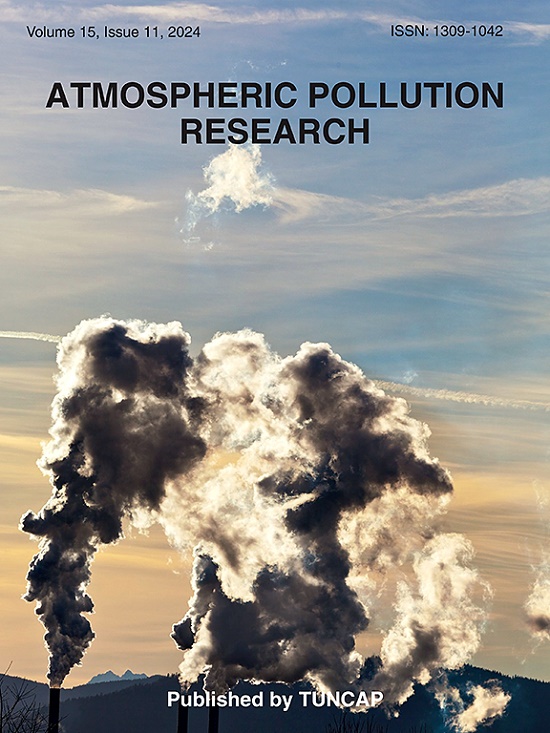Indoor ultrafine particles entering human respiratory regions: defining an index for maximum deposition dose probability in a university classroom case study
IF 3.5
3区 环境科学与生态学
Q2 ENVIRONMENTAL SCIENCES
引用次数: 0
Abstract
Ultrafine particles (UFPs) are relevant for human health due to their ability to penetrate the respiratory tract. Although several diseases are related to UFPs exposure, no reference levels for protecting human health have been established yet. In this work, experimental size distribution and concentration of UFPs are used to model their deposition in five different regions of the respiratory tract. This has been achieved by introducing the concept of a resonant system between the modelling of human deposition of particles and the environmental data. Such resonant system is mathematically described by the resonance angle, a function linking the particle deposition efficiency for different particles size classes to the corresponding measured size distribution. From this resonance angle it is possible to calculate the probability of maximum deposition dose corresponding to the actual UFPs indoor contamination. This method has been applied to one-month measurements of UFPs in a university classroom in Rome, Italy. Results show that the average values of risk angle of deposition are time dependent and ranged between 46,4° and 62,6° for alveolar and bronchiole regions, respectively, confirming UFPs mainly impacting the deepest respiratory region. The risk of exposure to UFPs as described by the resonance angle resulted varying along the week and among the five pulmonary regions of concern. Moreover, the calculated maximum probability for dose deposition in the five regions of the respiratory tracts did not always occur in correspondence of high values for the total PNC of UFPs.

进入人体呼吸区域的室内超细颗粒:在大学课堂案例研究中定义最大沉积剂量概率指数
超细颗粒(ufp)具有穿透呼吸道的能力,与人类健康息息相关。虽然有几种疾病与接触紫外线辐射有关,但目前还没有确定保护人类健康的参考水平。在这项工作中,ufp的实验大小分布和浓度被用来模拟它们在呼吸道五个不同区域的沉积。这是通过在人体粒子沉积模型和环境数据之间引入共振系统的概念来实现的。共振角是将不同粒度的颗粒沉积效率与相应的测量粒度分布联系起来的函数,它在数学上描述了这种谐振系统。从这个共振角度可以计算出与实际ufp室内污染相对应的最大沉积剂量的概率。该方法已应用于意大利罗马一所大学教室为期一个月的ufp测量。结果表明,肺肺泡区和细支气管区沉积风险角的平均值随时间变化,分别在44.6°和62.6°之间,证实ufp主要影响最深的呼吸区。通过共振角描述的ufp暴露风险在一周内和五个相关肺区之间有所不同。此外,计算出的五个呼吸道区域剂量沉积的最大概率并不总是与ufp总PNC的高值相对应。
本文章由计算机程序翻译,如有差异,请以英文原文为准。
求助全文
约1分钟内获得全文
求助全文
来源期刊

Atmospheric Pollution Research
ENVIRONMENTAL SCIENCES-
CiteScore
8.30
自引率
6.70%
发文量
256
审稿时长
36 days
期刊介绍:
Atmospheric Pollution Research (APR) is an international journal designed for the publication of articles on air pollution. Papers should present novel experimental results, theory and modeling of air pollution on local, regional, or global scales. Areas covered are research on inorganic, organic, and persistent organic air pollutants, air quality monitoring, air quality management, atmospheric dispersion and transport, air-surface (soil, water, and vegetation) exchange of pollutants, dry and wet deposition, indoor air quality, exposure assessment, health effects, satellite measurements, natural emissions, atmospheric chemistry, greenhouse gases, and effects on climate change.
 求助内容:
求助内容: 应助结果提醒方式:
应助结果提醒方式:


